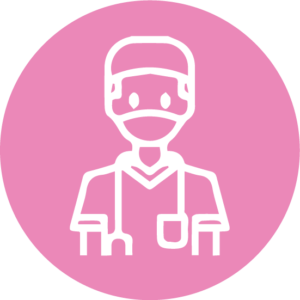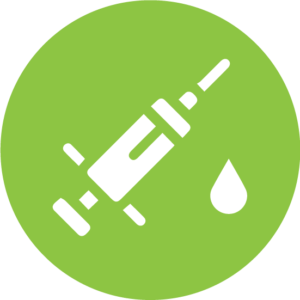

Statistics – Cases and Deaths for Childhood Brain Cancer
| Year | Type of Data | Age | Cases | Male | Female | Deaths |
| 2013 | Actual | 0-19 | 96 | 56 | 40 | 52 |
| 2014 | Actual | 0-19 | 109 | 58 | 51 | 38 |
| 2015 | Actual | 0-19 | 120 | 76 | 44 | 34 |
| 2016 | Actual | 0-19 | 135 | 68 | 67 | 45 |
| 2017 | Actual | 0-19 | 118 | 46 | 72 | 47 |
| 2018 | Projection* | 0-19 | 122 | 51 | 71 | 40 |
| 2019 | Projection* | 0-19 | 124 | 73 | 51 | 37 |
| 2020 | Projection* | 0-19 | 124 | 74 | 50 | 41 |
| 2021 | Projection* | 0-19 | 131 | 79 | 52 | 42 |
*Projection data is based on current trend, actual data may show an increase or decrease in these projections
Reference: Australian Cancer Database (ACD) and the National Mortality Database (NMD) https://www.aihw.gov.au/reports/cancer/cancer-data-in-australia/contents/cancer-rankings-data-visualisation
It is difficult to interpret incidence rate trends given the limited understanding of the causes of most cases of childhood brain cancer. Unlike adult cancer, lifestyle factors are rarely, if ever, involved.
Tragically Brain Cancer has accounted for the largest number of cancer deaths among children under 15 years in Australia at a massive 42% of all childhood cancer deaths. (Australian Childhood Cancer Registry, 2020)
Adults average age at diagnosis is 66 years old, with the number of years lost 17 and the child average age at diagnosis is 6 years old, so number of years lost is a massive 77.
Facts
People diagnosed with brain cancer each year
People die with brain cancer each year
- Brain cancers in children are different from those in adults. Children’s’ bodies and brains are still developing. Their tumours are different too. Childhood tumours frequently appear in distinct locations and behave differently when compared to brain tumours in adults.
- Survival rates have not improved in over 35 years and despite this it receives very little cancer research funding, relying mainly on families and the community to fund vital research.
- There are now almost 2000 people diagnosed with brain cancer each year and over 1500 deaths. Brain cancer kills more children in Australia than any other disease. Tragically more than an entire classroom of children will die from this insidious disease. It is also the leading cause of cancer deaths in people under forty. Sadly, in Australia, six people are diagnosed every day and four will die, that means one person will die every six hours and it could be a child. (Causes of Death, Australia, 2019.) Australian Bureau of Statistics Australian Institute of Health and Welfare 2021. Cancer data in Australia. Cat. no. CAN 122. Canberra: AIHW).
- The five-year survival rate for brain cancer has increased from 21.2% in 1986, to only 22.3% today. Whilst other cancer survival rates are sitting at 90% and above. Australian Institute of Health and Welfare 2021. Cancer data in Australia. Cat. no. CAN 122. Canberra: AIHW.).
- Beyond the loss of precious young lives, the burden of childhood brain cancer extends to the long-term adverse health effects experienced by a large proportion of childhood cancer survivors, either because of the cancer itself, surgery or from treatments used.
- Brain cancer has the highest total burden of disease for adolescents and young adults in Australia, with a cost of $1.7 million per person. (CanTeen Australia 2017. The economic cost of cancer in adolescents and young adults.).
- Did you know that all paediatric patients diagnosed with Brain Cancer in Canberra/ACT and surrounding areas that feed to Canberra hospital e.g., Cooma, Young etc are transferred to either Sydney Children’s Hospital Randwick or Westmead for the diagnosis and treatment of their cancer? This is a long- established referral pathway dating back well over 20 years.
- Children from Canberra and surrounding areas with brain tumours are not able to be treated in Canberra and there is absolutely no research or specialised care for childhood brain cancer in Canberra.
- Unfortunately, and tragically, there is no paediatric cancer specialist in Canberra. The Sydney Children’s Hospital network do work very closely with the Canberra paediatricians to facilitate admission to local hospital for non-acute admissions.
- In addition, Sydney Children’s Hospital do some specialist clinics each year in Canberra and provide nursing, palliative care support and bereavement support to ACT patients. They also provide speciality long term follow-up clinics and nursing to ACT patients for patients off treatment and in remission into adulthood.
- The Kids Cancer Centre laboratory research program is one of the largest in Australia devoted to the investigation of childhood brain cancer. Funding for all the research projects and programs depends on vital community support. It is for this reason that Dainere’s Rainbow funds go directly to Sydney Children’s Hospital Kids Cancer Centre.
- Treatment for brain cancer is challenging. Surgery poses a high risk of brain damage, and in some cases is impossible. Radiation therapy may only temporarily delay tumour growth. Many chemotherapy drugs can’t cross the blood-brain barrier (the body’s natural defence against harmful chemicals entering the brain) and so can’t reach the cancer.
- As well as experiencing side effects during treatment, children treated for brain cancer often suffer ongoing health issues, sometimes for the rest of their lives. These include hormonal and growth abnormalities, vision and hearing problems, behavioural changes, depression and anxiety, and other issues.











